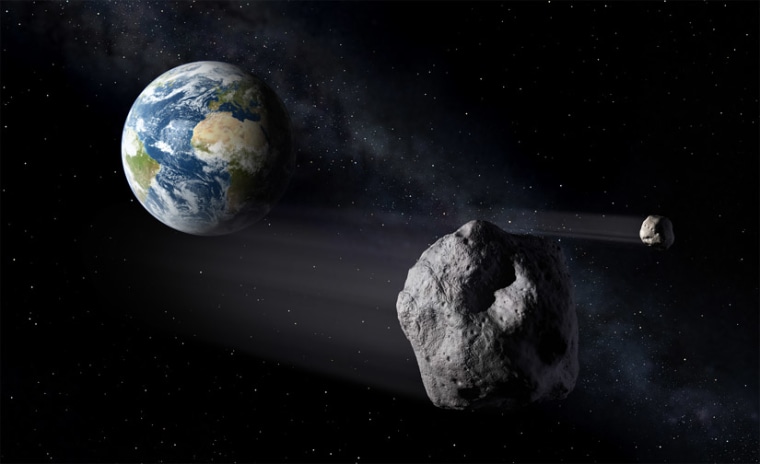Yet again young amateur astronomers are helping scientists with real science.
That's the beauty of astronomy; the sky is a big place, plenty of room for everyone. Nowhere is this truer than in the search for asteroids and, in particular, the more deadly near-Earth asteroids (NEAs).
So, a partnership with the UK's Faulkes Telescope Project hopes to boost the European Space Agency's space hazards research while at the same time giving students the chance to discover potentially hazardous space rocks.
PHOTOS: Top 10 Ways to Stop an Asteroid
ESA's Space Situational Awareness (SSA) program keeps watch over space hazards, including disruptive space weather, space junk and asteroids that pass close enough to cause concern. Yet all attempts to catalog and survey these hazardous NEAs face numerous difficulties —they are often dark and difficult to spot against the inky blackness of space.
It's not unusual for asteroids to be right on our doorstep before they are detected and then often disappear again before the discovery can be confirmed. Unfortunately many observations are key to fully understanding their orbits and any likely risk of impact we may face from them in the future.
So professional research projects often turn to the armies of amateur astronomers around the world to help with observations or to lend a hand with the vast amounts of data that need processing. And it's thanks to initiatives like Faulkes that makes research-grade instruments available that make projects like this viable.
NEWS: Zeppelin Hunts California Meteorite Debris
This month, the Faulkes will become the latest team to support the SSA program formally. Spain's La Sagra Sky Survey, operated by the Observatorio Astronomico de Mallorca, began helping SSA earlier this year.
"The wider astronomy community offers a wealth of expertise and enthusiasm, and they have the time and patience to verify new sightings; this helps tremendously," said Detlef Koschny, head of NEO activity at ESA's SSA program office.
"In return, we share observing time at ESA's own Optical Ground Station in Tenerife and provide advice, support and professional validation. We'll assist them in any way we can."
The Faulkes Telescope Project runs both educational and research programs, based at the University of Glamorgan in the UK. The project has a strong record in public education and science outreach, and is a partner of the U.S.-based Las Cumbres Observatory Global Telescope network, which owns and operates two telescopes. Faulkes supports hundreds of schools across Europe.
ANALYSIS: Nuking Asteroids: It's a Megaton of Fun!
"Our new cooperation with ESA is a great opportunity. Use of the 2-meter diameter telescopes in Hawaii and Siding Spring, Australia, will greatly enhance asteroid-spotting for the SSA program, enabling fainter object detection and tracking from a global telescope network," says Nick Howes, Pro-Am program manager at the Faulkes Telescope. "For UK, Polish and French school students, collaborating on exciting ESA activities and possibly detecting new NEOs is very appealing, as it's engagement with one of the world's great space agencies doing critical scientific work."
